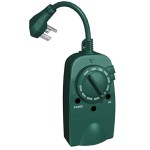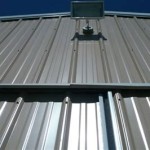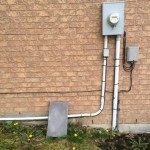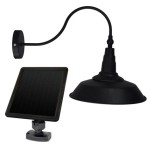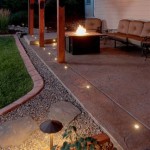How To Run Outdoor Electrical Wiring
Running outdoor electrical wiring is a task that requires careful planning and execution. By following these essential aspects, you can ensure a safe and reliable electrical system for your outdoor space.
1. Planning and Preparation
Before starting any work, it's crucial to plan your wiring route and gather the necessary materials and tools. Determine the location of your electrical outlets, light fixtures, and other devices. Ensure you have the correct gauge and type of wire for your specific application, as well as conduit or other protective measures.
2. Choosing the Right Wire and Conduit
Outdoor electrical wiring is exposed to moisture, sunlight, and extreme temperatures. Therefore, it's essential to use appropriate wire and conduit materials. Consider using moisture-resistant, UV-resistant, and insulated cables. Conduit protects the wires from damage and ensures they remain secure and accessible for future maintenance.
3. Trenching and Burying
If necessary, dig trenches for your wires and conduit. The depth of the trench should be at least 18 inches, and the width should allow for easy wire placement and maintenance. Use a cable locator to mark any existing underground utilities to avoid accidental damage.
4. Wire Connections and Junction Boxes
Make sure all wire connections are secure and protected from moisture. Use weatherproof junction boxes to house connections and splices. Seal all openings with silicone or other suitable sealant to prevent water intrusion.
5. Grounding and Bonding
Grounding is essential for safety. Connect all metal components of your electrical system, such as junction boxes and conduit fittings, to a grounding electrode. Bonding helps protect against voltage spikes and lightning strikes by creating a low-resistance path to ground.
6. Installing Outlets and Light Fixtures
Install outdoor electrical outlets and light fixtures according to the manufacturer's instructions. Use weatherproof covers and mounting hardware to ensure durability and safety. Ensure that all fixtures are properly sealed to prevent moisture from entering.
7. Testing and Inspection
After completing the wiring installation, test the system thoroughly to ensure it functions correctly. Use a multimeter to check for voltage, continuity, and proper grounding. Consider hiring a licensed electrician to inspect your work and issue a certificate of approval.
Additional Tips
- Use direct burial wire for underground installations.
- Secure wires to walls or other structures using cable clamps or straps.
- Avoid running wires directly on the ground.
- Label all wires and components for easy identification.
- Keep a record of your wiring layout for future reference.
By following these essential aspects, you can confidently run safe and effective outdoor electrical wiring. Remember to always consult local codes and regulations and seek professional assistance when necessary.

Basic Outdoor Wiring Comes With Safety Precautions

Running Power To An Outbuilding Fine Homebuilding
:strip_icc()/SCW_262_06-7705039be81e4d52b647966e9dff1249.jpg?strip=all)
How To Extend Power Outdoors

Running Power To An Outbuilding Fine Homebuilding
:strip_icc()/SCW_262_05-58697b6f24be4f808bd31e62a54df143.jpg?strip=all)
How To Extend Power Outdoors

How To Run Electrical Wiring Outside Family Handyman

Basic Outdoor Wiring Comes With Safety Precautions

Interior Remodel Diy Electrical Outdoor

How To Install Underground Electrical Wiring Pro Tool Reviews

How To Run Electrical Wire Outside Hunker
Related Posts
